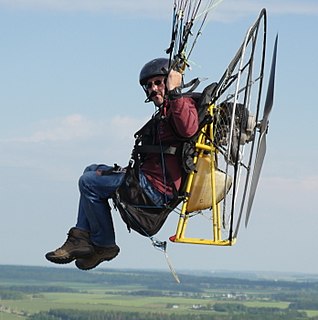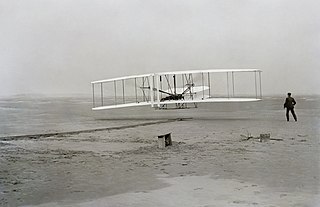The Aerosport OY Spider is a family of Estonian paramotors that was designed and produced by Aerosport OY of Keila for powered paragliding. Now out of production, when the series were available the aircraft were supplied complete and ready-to-fly.
The Airfer Titan is a family of Spanish paramotors that was designed and produced by Airfer of Pontevedra for powered paragliding. Now out of production, when the line was available the aircraft were supplied complete and ready-to-fly.
The Airtime Discovery is an Australian paramotor that was designed and produced by Airtime Products of Airlie Beach, Queensland for powered paragliding. Now out of production, when it was available the aircraft was supplied complete and ready-to-fly.
The Arey Tatush is a Russian paramotor that was designed and produced by Arey of Krasnoyarsk for powered paragliding. Now out of production, when it was available the aircraft was supplied complete and ready-to-fly.
The Back Bone Seraph is a family of French paramotors that was designed by Thierry Simonet and produced by Back Bone of Tallard for powered paragliding. Now out of production, when it was available the aircraft was supplied complete and ready-to-fly.
The Back Bone Shadow is a family of French paramotors that was designed by Thierry Simonet and produced by Back Bone of Tallard for powered paragliding. Now out of production, when it was available the aircraft was supplied complete and ready-to-fly.
The Büttner Crazy Plane is a family of German paramotors designed by Gerald Büttner and produced by Büttner Propeller of Obernkirchen for powered paragliding. The aircraft are supplied complete and ready-to-fly.
The D'Yves Yvasion 2000 is a family of French paramotors that was designed by Yves Hélary and produced by D'Yves Air Pub of La Chapelle-en-Vexin for powered paragliding. Now out of production, when it was available the aircraft was supplied complete and ready-to-fly.
The Fly Castelluccio Mach is a family of Italian paramotors that was designed and produced by Fly Castelluccio of Ascoli Piceno for powered paragliding. Now out of production, when it was available the aircraft were supplied complete and ready-to-fly.
The Fresh Breeze Respect is a family of German paramotors that was designed and produced by Fresh Breeze of Wedemark for powered paragliding. Now out of production, when it was available the aircraft was supplied complete and ready-to-fly.
The La Mouette SR 210 is a French paramotor that was designed and produced by La Mouette of Fontaine-lès-Dijon for powered paragliding. Now out of production, when it was available the aircraft was supplied complete and ready-to-fly.
The MS Parafly Skyward is a family of German paramotors that was designed by Martin Sauter and produced by MS Parafly of Meßstetten for powered paragliding. Now out of production, when it was available the aircraft was supplied complete and ready-to-fly.
The Paramania Vortex is a French/British paramotor that was designed by Mike Campbell-Jones and produced by Paramania of Le Chillou, France and later of London, England for powered paragliding. Introduced about 2002 and now out of production, when it was available the aircraft was supplied complete and ready-to-fly.
The Marbella Parapente Paramotor PAP is a family of Spanish paramotors that was designed by Pierre Aubert and produced by Marbella Parapente of Málaga for powered paragliding. Now out of production, when it was available the aircraft was supplied complete and ready-to-fly.
The Paramotor Performance M3 is a family of Swedish paramotors that was designed and produced by Paramotor Performance of Bandhagen for powered paragliding. The aircraft are supplied complete and ready-to-fly.
The Paramotor Mosquito is a Polish paramotor that was designed by Ryszrd Zygadio and produced by Paramotor Napedy Paralotniowe of Warsaw for powered paragliding. Now out of production, when it was available the aircraft was supplied complete and ready-to-fly.
The H&E Paramotores Solo is a Spanish paramotor that was designed and produced by H&E Paramotores of Madrid for powered paragliding. Now out of production, when it was available the aircraft was supplied complete and ready-to-fly.
The Parasport.de Fun is a family of German paramotors that was designed and produced by Parasport.de of Schwanewede for powered paragliding. Now out of production, when it was available the aircraft was supplied complete and ready-to-fly.
The Phoenix Skywalker is a series of German paramotors that was designed and produced by Phoenix Gleitschirmantriebe of Würselen for powered paragliding. Now out of production, when it was available the aircraft was supplied complete and ready-to-fly.
The Walkerjet Simon is a family of Czech paramotor designs that were designed by Victor Procházka and produced by Walkerjet of Třemošná for powered paragliding. Now out of production, when they were available the aircraft were supplied complete and ready-to-fly.





